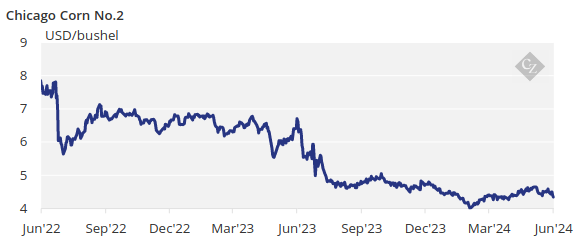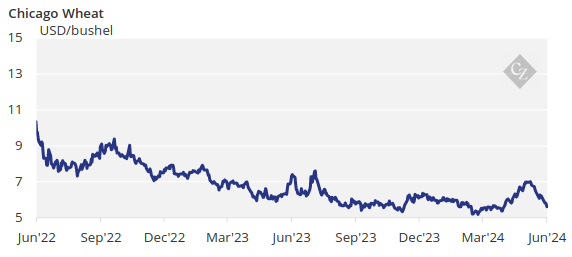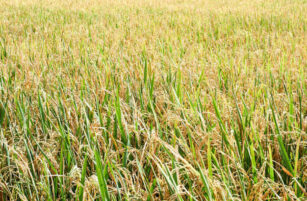Insight Focus
Both corn and wheat markets sank this week as more clarity emerged over the condition of the Russian and Ukrainian crops. Some Russian analysts are even discussing raising production estimates after slashing them a few weeks ago. Extreme US heat could pose some risk, but this is likely to be limited.
Grains plummeted this week following reports of good US growing conditions and an easing of fears about the damage to Russian production. With the risk of Russian production gone, the only upside risk can come from US heat having impacted the corn crop, although we think this will be limited if the expected rains arrive.
The USDA acreage report this Friday will bring some volatility to the market, but we are expecting no surprises. We would expect some consolidation after last week’s correction, but there is still enough uncertainty to ensure volatility will stay high.
There is no change to our Chicago corn forecast for the 2023/24 (September/August) crop to average USD 4.60/bushel. The average price since September 1 is running at USD 4.55/bushel.
Corn Turns Bearish
Last week started negative, mostly on good rains in Russian and Ukraine eliminating fears of further damage to their crops. The bearishness was further fuelled by a very good harvest pace in US wheat.

US corn is now fully planted, and the condition was 72% good or excellent (or two points lower week on week) and far ahead of the 55% reported last year. Argentinian corn is 49.3% harvested.
Russian and corn planting are almost complete, in line with last year and the five-year average. In France, conditions were unchanged at 81% good or excellent versus 85% last year.
US Wheat Harvest Progresses
Wheat had a negative start to the week as fears of the damage to Russian and Ukraine crop dissipate thanks to ample rains. The selloff was also fuelled by the very good pace of the harvest in the US, which is very much ahead of last year and the five-year average.
US winter wheat is 27% harvested ahead of 13% last year and the five-year average of 14%. The crop condition was 49% good or excellent, up 2 points week-on-week and ahead of 38% last year. The condition of French wheat was 62% good or excellent, unchanged on the week but below the 83% reported last year. Wheat harvesting in Ukraine has now started.

Weather Risks Ease
The US suffered a heatwave last weekend, which will most likely have a negative impact on corn and soybean conditions. We will have to wait for assessment of the damage, but rains are forecast this week, which should partially offset the very high temperatures. The extent to which the damage might be mitigated is still unclear. The USDA’s planted acreage and quarterly stock report will be released this Friday.
Brazil is expected to receive rains in the south again while the rest of the centre south is expected to remain dry. Warm and dry weather is expected in northwestern Europe with some rains during the second half of the week.
Weather continues to provide volatility but the main reasons for the May rally (frost in Russia and Ukraine followed by dry weather) appear to have disappeared thanks to ample rains. Some local analysts in Russia are already suggesting they will lift their estimates for wheat production after heavy reductions just a couple of weeks ago. This was the main reason for the sell off last week.
With the risk to Russian production gone, the only upside risk can come from US heat having impacted the corn crop, although we think this will be limited if the expected rains arrive.













